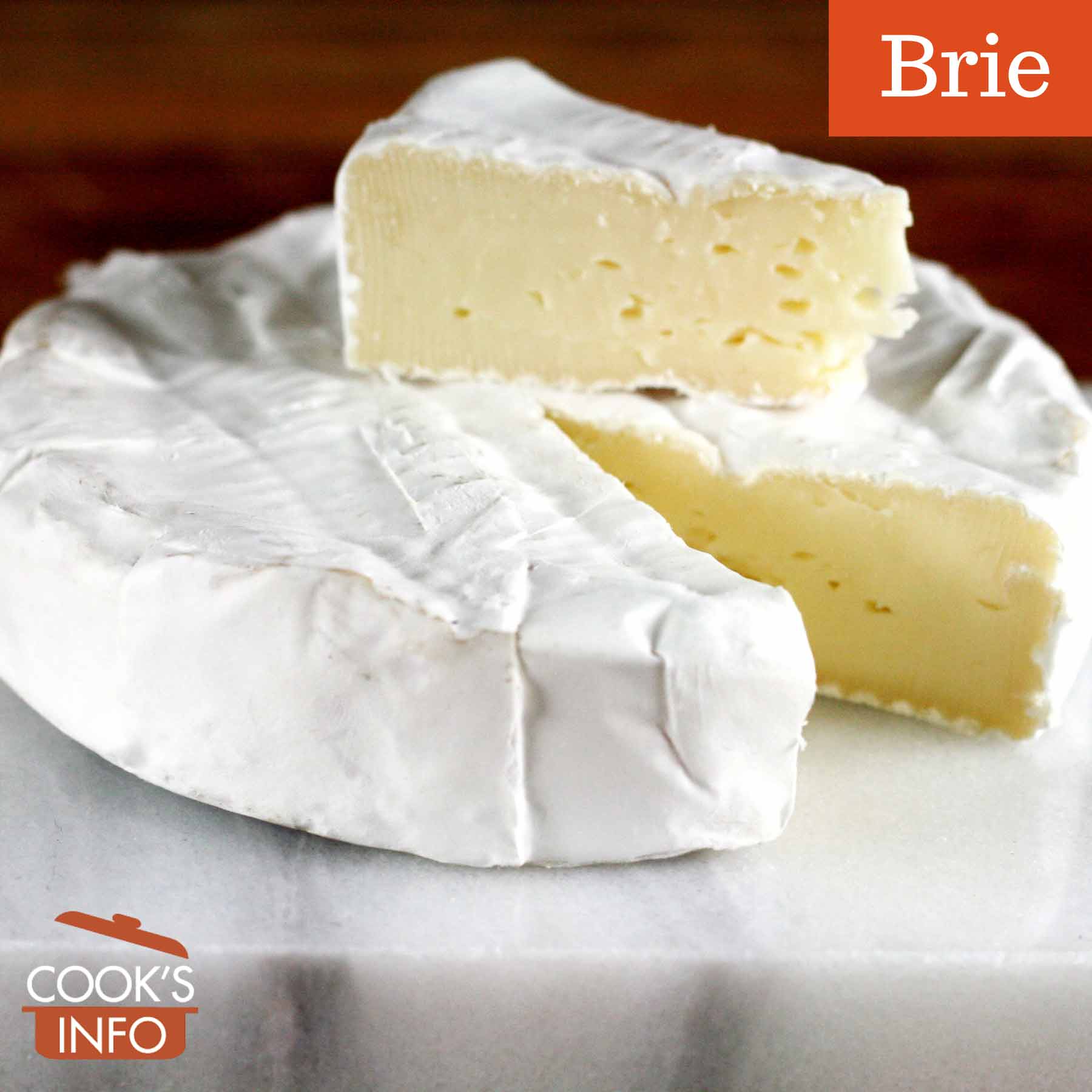
Brie. © Cooksinfo / 2018
Brie is a creamy French cheese popular for its smooth yet tangy, slightly acid taste and its woodsy smell. The cheese ripens quickly, and must be eaten before the flavour and aroma become offensive. The cheese is pale yellow inside with a crust like a soft white velvet.
You’ll have noticed that Brie (as well as Camembert) has looser packaging than many other cheeses. It can’t be sealed in air-tight packaging as that would shorten its shelf life. Around 80% of the Brie sold in the world is wrapped by machinery from the German company “Alpma”. [1]The Cheese Industry – Alpma builds the machinery. DeutscheWelle. 2 June 2015. Accessed April 2022 at https://www.dw.com/en/the-cheese-industry-alpma-builds-the-machinery/av-18493092
Brie has been deemed a “generic” name by the European PDO food registration system, meaning that it can be made anywhere, by anyone.
There are several different styles of Brie cheese.
How Brie ripens
Brie is ripened from the outside in, by applying a coating of the white surface bacteria that ripens it. As the ripening moves inward, the cheese is transformed from a solid into a creamy semi-liquid. The cheese is formed into thin wheels because if the wheels were too thick, the outside might liquify entirely while the inside remained unripened.
Because it continues to ripen after the inside reaches the creamy semi-liquid stage, it generally has to be used up within about 40 days. If Brie is too ripe, it will have an ammonia smell to it.
Nutrition Facts
Per 100 g (3 ½ oz)
Calories 319
Fat 26.9 g
Saturated 16.8 g
Calcium 540 mg
History Notes
Brie has been made just outside Paris since the 8th century. It used to be called “The King’s Cheese”, but after the revolution it was called “The King of Cheeses”.
Types of Brie
- Brie de Chèvre
- Brie de Coulommiers Cheese
- Brie de Meaux
- Brie de Melun
- Brie de Montereau
- Brie de Nangis
- Brie Noir
References
| ↑1 | The Cheese Industry – Alpma builds the machinery. DeutscheWelle. 2 June 2015. Accessed April 2022 at https://www.dw.com/en/the-cheese-industry-alpma-builds-the-machinery/av-18493092 |
|---|

